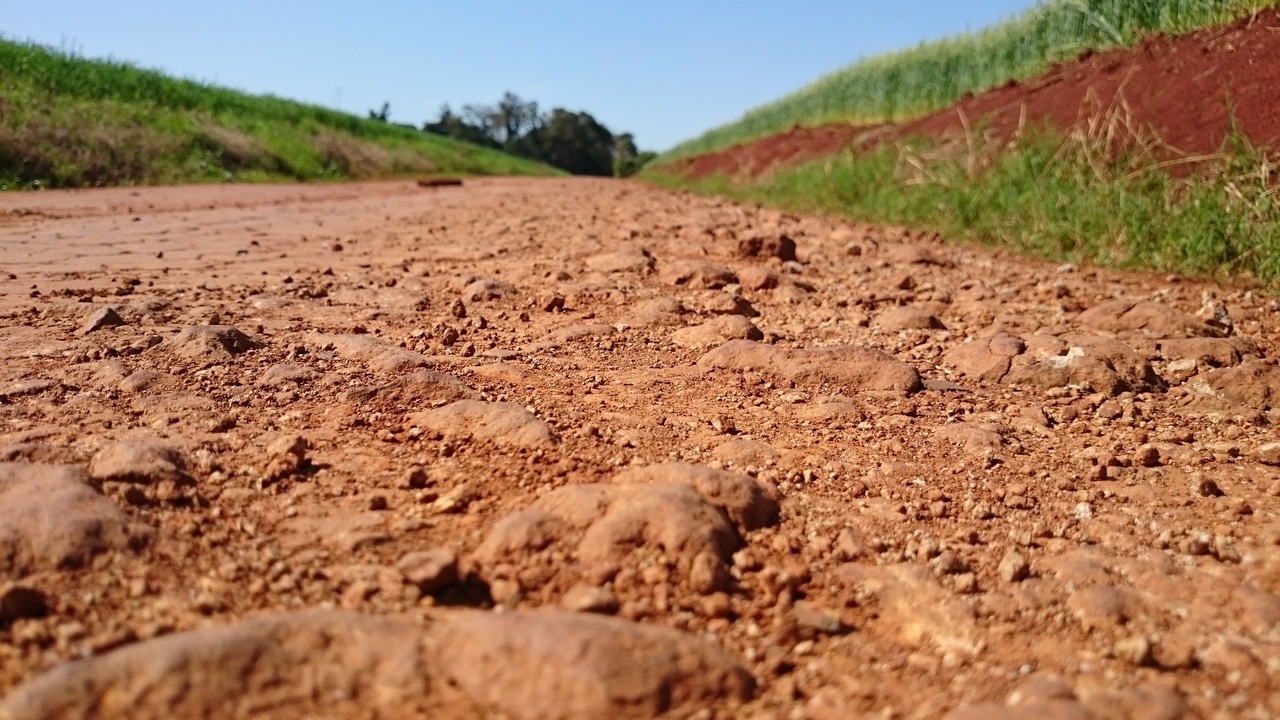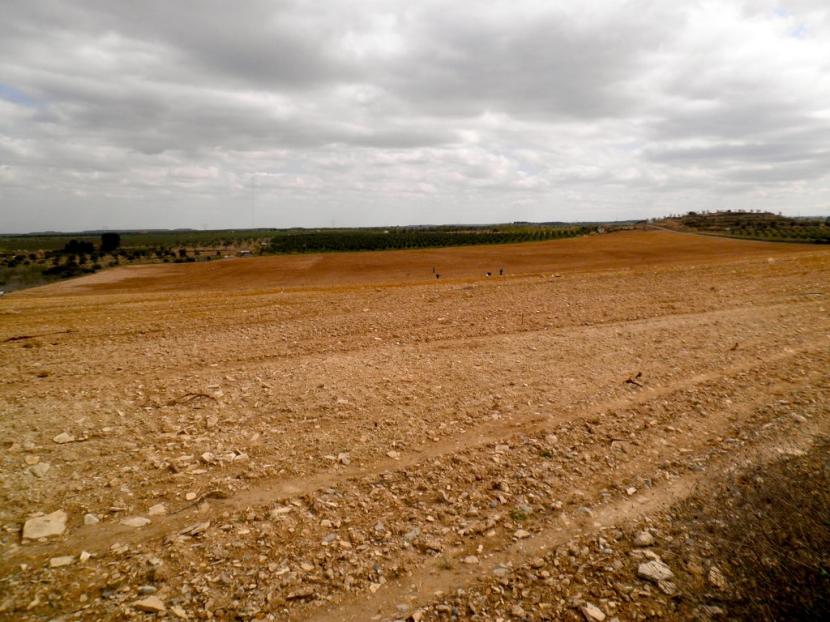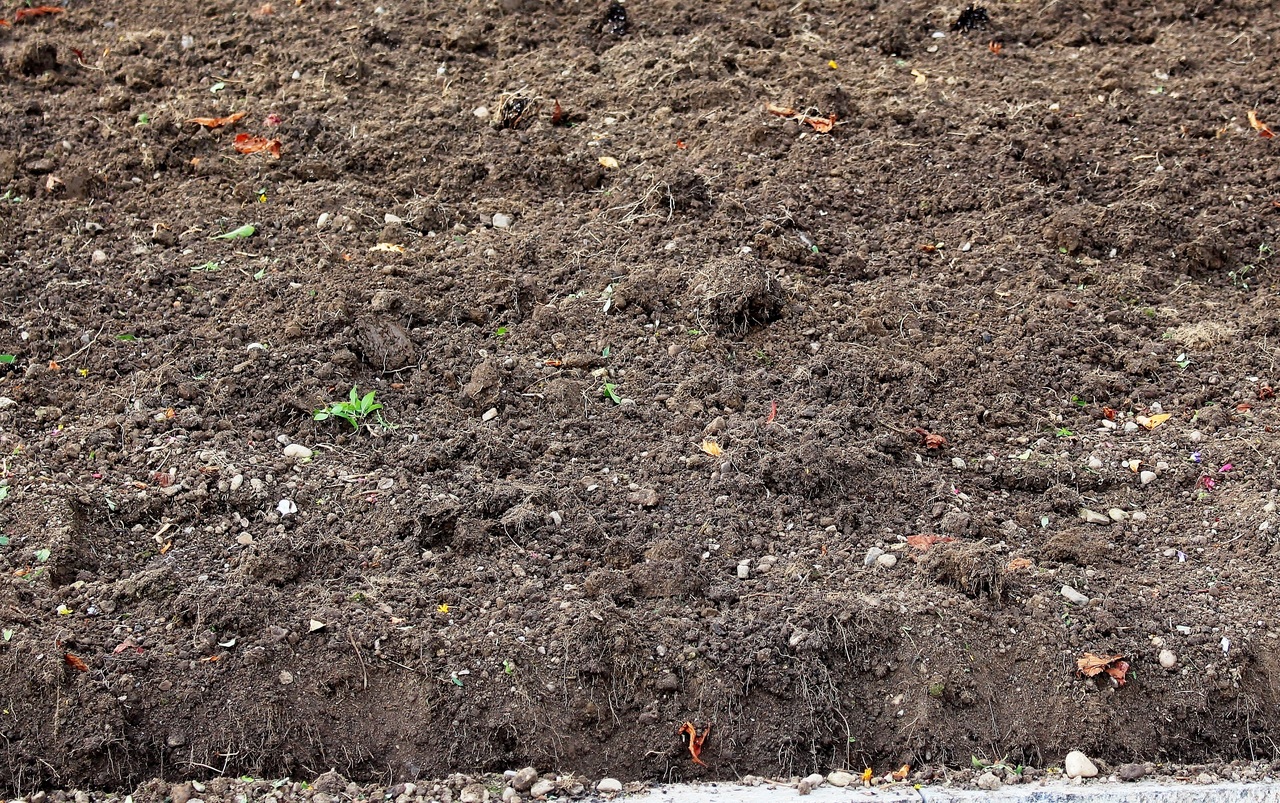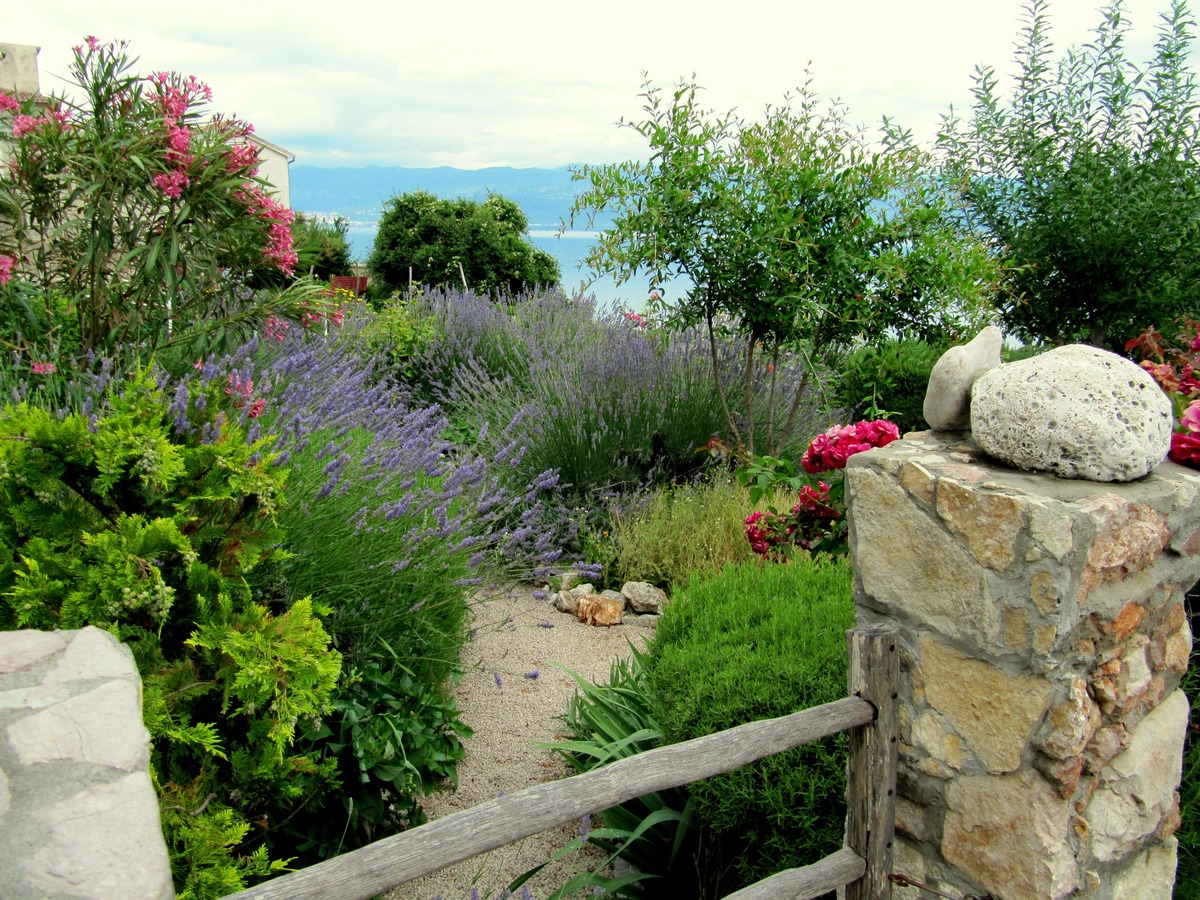
The clay soils They can cause many problems for your plants, since they have a tendency to compact a lot, something that makes it difficult for the soil to absorb water, remaining on the surface for longer than desired. However, they are soils that can be modified so that the garden can grow without difficulty.
If you also want to know how to improve clay soils, Take note of these tips.
What are the characteristics of clay soils?

Clay soils are a type of soil that, once you see them and start working with them, you never forget their characteristics. Unlike others, clay soil is one in which clay predominates over silt and sand. But what is clay? It is nothing more than a set of mineral particles that are less than 0,001 mm in diameter.
The main features are as follows:
- The color of the earth is brown, and it becomes clearer the deeper you go.
- It is very compact, and it becomes even more in dry season, to the point that it can easily crack.
- When it's completely dry it is hard for him to absorb the water, which is why the water that falls during a torrential rain is (almost) completely lost.
- It has a large amount of nutrients, but being so heavy it is difficult for plants to absorb them. In addition, lime blocks iron and manganese, so it is not advisable to plant acidophilic plants in these soils.
Is clay soil the same as alkaline soil?
Although sometimes we differentiate them, the truth is that you could say yes. An alkaline soil is a clay soil that has a high pH, greater than 9 (pH is the potential for hydrogen; it is a measure that tells us how acidic or alkaline a substance is). These lands have a low capacity to infiltrate water, a dense structure and poor in nutrients, and to make matters worse they often have a compact calcareous layer at a depth of 0,5 to 1 meter.
If we want to complicate the issue a bit more, we must know that all alkaline soils are also basic, as they have a pH greater than 7,5, but not all basic soils are alkaline. Why? Because for a basic soil to be alkaline, it must have a high concentration of sodium carbonate, which expands the clay once it is moistened.
How to improve clay soils?

Although beforehand It can turn out to be an impossible task, correcting a clay soil to be able to cultivate in it is not difficult. It will take weeks and maybe months, but in the end the results will be worth it.
Here are some ways you can improve it:
Mix it with compost and perlite
Modifying the characteristics of this type of flooring is very simple. The first thing I recommend you do is that pass the tiller for your garden, to soften the ground and that can facilitate the next step. The more crumbly the soil is, the easier it will be for you to mix it with compost.
Once you have it, casts a thick layer on the surface -about 20cm- organic compost, such as vermicompost or horse manure, and perlite (or similar substrates, such as arlite, or volcanic clay). The rototiller passes again, or if you prefer a rake to mix your clay soil with these elements with which your plants will be able to grow and develop smoothly.
Reuse 'old' substrate
Another option, although slower, to improve clay soils is to throw in the garden all the substrate you have used, as well as compost. For example, if you have changed the substrate of a potted plant, you can put the 'old' in the garden. As I say, it will take you longer, but the result in the end is the same, because the rain will soften the earth, and by doing so, both the substrate used and the compost will end up mixing with the clay.
This is something that I have done in my garden myself, and still do today. In a small area, where we have a fig tree (ficus carica), the soil has gone from brown to dark brown almost black, and drainage has improved quite a bit compared to how it was before doing anything. But If I had to say what has been most effective for me, I would undoubtedly say several things:
- The contribution of organic fertilizer: once of horse manure, another chicken, another guano, another of worm humus, ... Using one each time, has achieved that the richness in nutrients of the soil is greater, and that its ability to absorb water has improved.
- Leave the pruning debris and fallen leaves on the surface of the soil so that they can decompose: This in the end is nothing more than natural fertilizer for the earth, something that will come in handy for new plants that want to be planted in the garden.
- Do not use chemical / compound phytosanitary products: For the environment, and for the cats that live in the area, but also for the garden land itself. These types of products cause very serious damage to flora and fauna, and therefore, to the earth.
Make a large planting hole and fill it with good soil
The latter method is much faster, but is only useful for that particular plant you want to plant. For it, what is done is to dig a large hole, 1 x 1 meter, and fill it with quality substrate or substrates. For example, when planting ornamental trees, it is advisable to mix universal substrate with 30% perlite or similar, as this way you ensure that they will be able to root easily.
A very important piece of information that I would like to tell you about is the following: if you want to plant a plant considered acidophilus -that is, those that only live in land with a low pH, such as camellias, maples, azaleas: gardenias-, you must make a hole of at least 2 m2 to fill it with acid substrate and thus avoid presenting symptoms of iron chlorosis like yellowing of the leaves.

Do you know another way to improve clay soil?
great thank you very much for your information
Adding fine river sand to avoid compaction in drought, is it a good option? It is a question.
Hi JoseK.
Yes, if you have a very compact soil, or the potting substrate that you are going to use is not very good, it is highly recommended to mix it with fine sand or even mix it with the soil.
Greetings.
THANK YOU VERY MUCH IT IS GOOD TO HAVE INFORMATION LIKE THIS
We are glad that it has served you, Maria 🙂
how many years does the golden rain live
it's for a school assignment
Hi miguel.
I can't tell you for sure, but about 70-100 years.
A greeting.
I really loved this page, I found it by chance looking for lime, and it opened my eyes to learn many things about sandy soil. At home we have planted many plants and almost all of them dry out, especially fruit trees. In one of the comments I found a wonderful answer on how to enrich this type of soil. I'm going to do it, Monica.
On the other hand, I can tell you that the climate where I live is extreme and the soil is sandy, but we want to have a garden full of flowers and fruit trees. We want to plant an avocado, but we don't know how to do it, we have tried 3 above and they dry out. What can we do? We wait for your advice Monica, please. Thanks in advance
Hi Patricia.
First of all, thank you for your words. It is always a pleasure to read that what is written people like 🙂
Regarding your doubt, for an avocado to do well, what you have to do is a large hole, at least 1m x 1m. Then, it is filled with a mixture of black peat with perlite (failing that, fine construction gravel, the vermiculite, arlite or volcanic clay) in equal parts. And finally, we proceed to plant the tree.
So it is very likely that he lives 🙂
Greetings!
Excellent information, thank you very much. I hope my gardenia has salvation.
Hi, Diana.
Thank you. We are glad that it has been useful to you.
Gardenia needs acidic soils to grow, so if the one you have is clay it is better to have it in a pot. Here you have his token in case it might be interesting for you.
Regards!
Hello Monica. Very good recommendations !!! I have a very clay soil, but I already have many plants and Bahian gramma. 3 years ago I started doing what is called aerating, holes and adding sand, and compost. This year everything has returned to near zero. I have very compacted areas and the roots are rotting and the grass turning yellow. I have returned with the airy and I have removed some areas already peeled. But when you shovel out huge lumps that are impossible to divide, they are sticky clay, it is shaped but does not separate !!!
You have commented that you have done it every year, this adding compost. If I do it regularly, every year, or more frequently, does it change?
Thanks a lot. Monica
Hello Monica.
Yes, clay soils pose a challenge for those of us who want to grow plants. But with patience, results are achieved.
For this reason, I recommend you continue to compost. Even if you can get chicken manure (if it's fresh, I'll tell you that it smells pretty bad, but it's what worked best for me). It contributes nutrients to the soil, and makes it "soften" a little.
It may also be necessary to install some drainage system. Or, without going any further, when planting a plant, make a large hole (as much as possible, if it is 1m x 1m better), and add a lot of gravel. Then fill it with universal substrate (the one sold at nurseries and garden stores). In this way, you can grow plants 'from now on'. 🙂
Regards!
Hello, I am studying a Middle Degree in gardening and I wanted to say that I usually get a lot of information from this page to do work and to prepare for the JEJE exams, greetings.
Hello José Ángel.
Well, we are very happy to be of help 🙂
If you have any doubts, please contact us.
Regards!